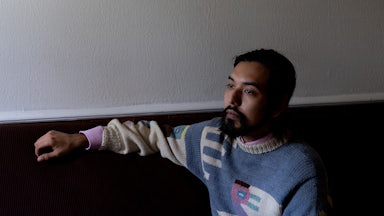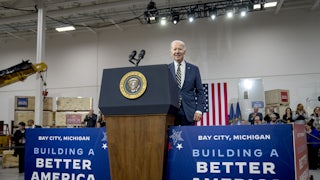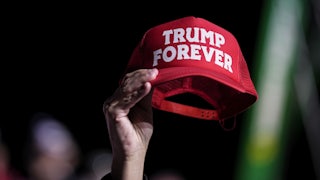I sit in my study mulling the grim reality around me in 2050, and I think: Let’s face it. We Americans love being a divided people. There isn’t much we like more. Maybe pets. We generally like our pets more than we like being a divided people. And we like our guns more than anything, more even than being a divided people. As Kurt Vonnegut Jr. once put it, “We trust ourselves so much with weapons that many American households keep firearms as pets.” That’s what we call a twofer.
But we like being divided. We like it very much. We feed on it constantly. We may mouth phrases such as “to form a more perfect Union” as a reflex, but we don’t really believe the sentiment. Division is what we believe in because it’s what we’ve always believed in.
In July 1776, we proudly proclaimed the essential equality of all human beings in the same document that called the original inhabitants of this territory “merciless Indian Savages.” Following independence, we didn’t get around to extending citizenship to Indigenous people until 1924, and even then we continued to devise ways to deny their votes for decades. That’s our Union! Our division over the enslavement of another people was so profound that it tore us apart in ways that continue to this day. We are continuously divided on welcoming our newest immigrants, even though immigration was the way most of us or our families got here.
For generations, we’ve been divided over who will pay for health care. And now, in 2050, we’re still divided over how to label gender. We divide over where to get our news. We divide over where to buy our coffee. We even divide over unions.
We love being divided because we believe it fuels our world-famous American dynamism, but, in reality, our division is borne out of fear. To be an American is to live in perpetual panic that one day and for whatever reason you will crash onto the bottom of our national barrel, never a pretty place in a country with a paper-thin social safety net. To obviate this fear is to buy into the idea that you must always be on top of someone else, whatever the cost. Inevitably, such clamor leads to division, but so be it. That’s the American way.
But there have been key moments when we set aside our division to unite as a nation. These times are clearly discernible if we choose to look for them. We unite domestically as a nation when we go overseas to wage a war. There are a few exceptions to this observation, but, especially after our Vietnamese misadventures, we have learned that waging war is better done in unison. Overseas wars have provided the glue that has kept us together at home. Or so we thought.
But now, 49 years after President George W. Bush proclaimed the global war on terrorism in 2001, we can finally see the damage this war has wrought. In retrospect, the signs were self-evident, but nobody had their glasses on. The president sold us on invading a sovereign country on false pretenses. The same government invaded our privacy by freely intercepting our electronic communications. A sinister-looking vice president leaned into a television camera and spoke about embracing “the dark side,” uttering the words as if he were reassuring the American public. We locked men up for decades in an offshore prison without charges and often on the most dubious grounds. We tortured some folks.
When the violence first came home from the war on terrorism in a big way—on January 6, 2021—most people blamed the sitting president. But now, almost 30 years later, we have finally come to realize how the rot began decades earlier. By 2002, the executive branch was already operating with gross contempt for established institutions, reckless disregard for the rule of law, and unabashed zealotry to achieve political aims at whatever human cost.
And cost it did. By 2022, the war on terrorism had an $8 trillion price tag. Conservatively speaking, close to a million people had been killed around the world. As many as 59 million had been displaced by the war by 2022, their desperate migrations adding fuel to the rising right-wing, anti-immigrant movements throughout Europe and North America. Instead of vanquishing terror from the planet, the war on terrorism enabled global terrorism to morph and expand. Even here.
Scholars of the United States had already begun noting how returning Vietnam veterans were key players in the white nationalist movements of the 1970s and 1980s. But it took us too long to notice that the new white nationalist groups since the war on terrorism began were also often populated by war on terrorism veterans. Just as we had learned to accept school shootings, we learned to live with car bombs. Democrats began buying weapons in numbers equal to Republicans. Everything began to fray.
As the war on terrorism helped spike various rises in Islamophobia, the rising tension of our divisions led to dangerous elevations in antisemitism and anti-Black racism, while our police forces continued to gather materiel from the war on terrorism to patrol even the smallest communities of color. Meanwhile, we pushed our southern border as far as Panama. We built walls around our cities and suburbs, where 90 percent of us now lived, in the vainglorious belief that our fancy architecture would repel what is unwanted rather than imprison ourselves.
But nothing spray-tanned gold can stay. The war has ended, out of exhaustion or conviction, no one is certain, and the president has decided she will formally end the war next week. For the first time in a long while, our future burns a little brighter. If we can find unity in peace, we will be a better people. We will have emerged from our nightmare, again able to be the best we can be. We will have survived this experience and resumed our vaunted American innocence, which, as everyone outside of our borders knows, is the most dangerous kind of American there is.






